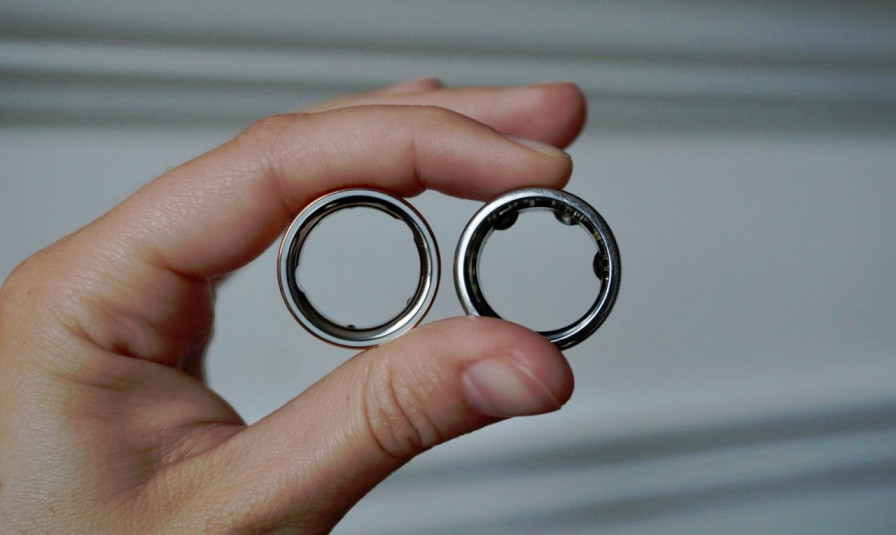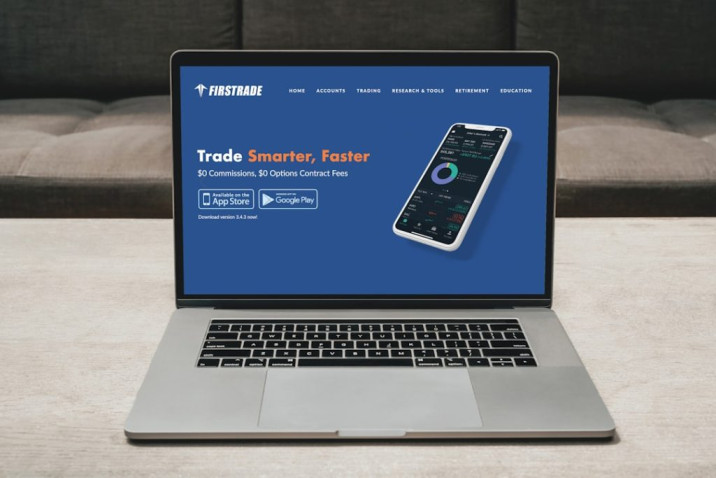For years, the Oura Ring has been celebrated as one of the most accurate discreet wearables for tracking sleep, recovery, HRV (heart rate variability), body temperature, and daily movement. Now in 2025, the Oura Ring 4 has arrived with upgrades intended to elevate the experience offered by the flagship Oura Ring 3. But is the upgrade worth the premium? This article breaks down all the key differences including sensors, tracking accuracy, battery, design, app features, price, and long-term value to help you decide which model aligns with your wellness goals and budget.
What Are Oura Ring 3 and Oura Ring 4?
Oura Ring 3 :
Released in 2018, the Ring 3 introduced temperature sensing, readiness scoring, and recovery tracking through a sleek titanium form factor. It earned acclaim for its comfortable wear often in sleep fits of five to seven nights per charge and accurate biometrics.
Oura Ring 4 :
Launched in late 2024, Ring 4 keeps the lightweight ring design while adding enhanced sensors such as continuous SpO₂, improved skin temperature variance, and better HRV tracking plus a slimmer profile and faster charging.
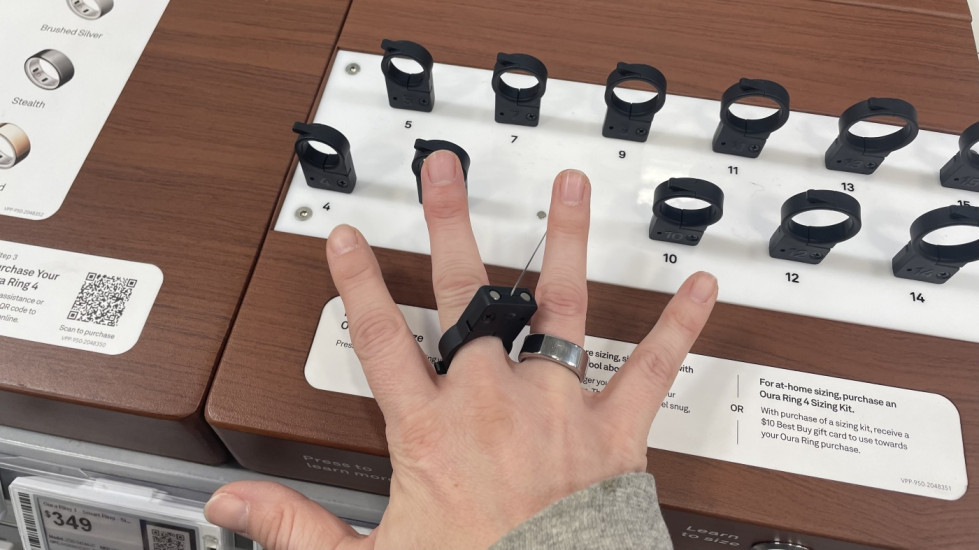
Design & Comfort:
Physical Dimensions & Feel:
- Ring 3 has a slightly thicker profile.
- Ring 4 strips down about 5%, lending a more natural fit, making it ideal for those who sleep with their hands under a pillow or prefer minimal jewelry.
Finish and Color Choices:
- Both rings offer classic metallic finishes, but Ring 4 introduces subtle matte options that hide scratches and appear more modern.
Sensors & Tracking Technology:
Common Sensors:
- Together, both rings house a 3D accelerometer, gyroscope, optical heart rate sensor, and infrared LEDs to support sleep and recovery tracking.
Upgraded Features in Ring 4:
- Continuous SpO₂ Monitoring tracks oxygen saturation during rest.
- Enhanced Temperature Sensor picks up smaller fluctuations, improving illness detection or menstrual tracking.
- Refined HRV Detection uses improved motion processing to refine readiness scores.
Sleep and Recovery Tracking:
Sleep Stages and Accuracy:
- Ring 3 offers reliable detection of light, deep, and REM sleep.
- Ring 4 refines this with smoother algorithms and better temperature context to reduce misreads during wakeful periods.
Readiness Score Enhancements:
- Ring 3 calculates readiness using sleep, activity, HRV, resting heart rate, and body temperature.
- Ring 4 incorporates finer HRV trends and SpO₂ variation, enabling faster early detection of illness or stress.
Activity and Workout Auto‑Detection:
- Ring 3 requires manual tagging for workouts.
- Ring 4 can automatically tag activity based on movement and heart rate, recognizing common workouts like running, strength training, or cycling.
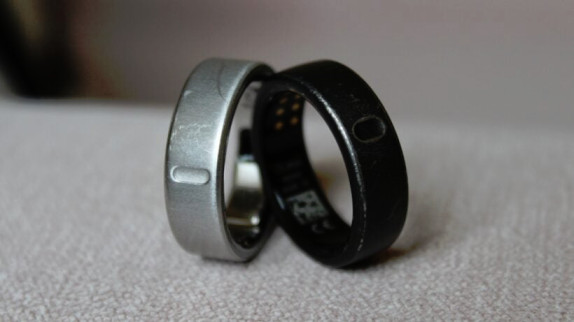
Battery Life & Charging:
Daily Use:
- Ring 3 offers 4–7 days of battery life depending on features used.
- Ring 4 extends this to 6–8 days even with more power-hungry sensors active.
Charging Speed and Cradle Redesign:
- Ring 4 charges in approximately 50–60 minutes, compared with 90 minutes for Ring 3.
- The charging cradle is magnetically aligned to reduce connection issues.
App Experience & Membership:
Application Enhancements:
Ring 4 requires the updated Oura app version 5.x or higher. It now includes health trends, SpO₂ tracking, temperature anomaly alerts, and deeper readiness insight.
Oura Membership Model:
Both rings require a $6.99/month or $59/year membership for advanced metrics. Membership is optional for basic tracking but unlocks the full experience especially valuable for Ring 4 users given the richer health data.
Pros and Cons:
Oura Ring 3
Pros:
- Lower upfront cost
- Dependable and proven performance
- Long battery life
Cons:
- No SpO₂ monitoring or refined temperature tracking
- Slightly bulkier ring design
- Shorter future firmware update window
Oura Ring 4
Pros:
- Improved sensors and insights (SpO₂, HRV, temperature)
- Slimmer, modern design
- Faster recharge and longer battery
- Stronger support outlook through 2028
Cons:
- Higher purchase price
- Requires membership for full feature set
- Potential lower resale value over time
Who Should Choose Ring 3 or Ring 4?
Budget-conscious users or newcomers: Ring 3 provides a dependable, affordable option. Health-focused individuals and athletes: Ring 4 offers richer tracking, better preparation data, and future-proof firmware. Long-term users: Ring 4’s extended support timeline ensures extended use, while Ring 3 may lose feature updates earlier.
Oura Ring 3 vs Ring 4: At-a-Glance Comparison
| Feature | Oura Ring 3 | Oura Ring 4 |
|---|---|---|
| Battery Life | 4–7 days | 6–8 days |
| Charging Time | ~90 minutes | ~50–60 minutes |
| SpO₂ Monitoring | No | Yes |
| Temperature Analytics | Basic trend detection | High-precision variance |
| Design | Slightly thicker | Slimmer and refined |
| Firmware Support | Through ~2026 | Through ~2028 |
| Price (Official MSRP) | ~$199 (older stock) | ~$299–349 |
| Membership Requirement | Basic data only w/o plan | Full experience requires plan |
Alternatives to Consider in 2025:
1. Fitbit Charge 7/ Sense 3:
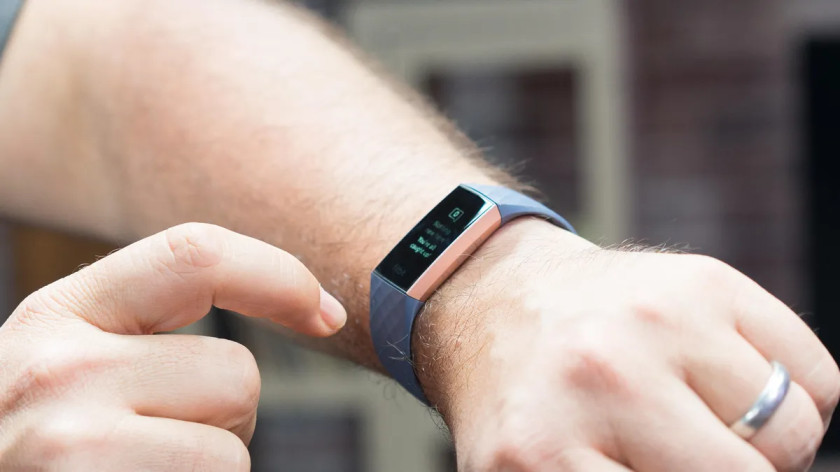
The Fitbit Sense 3 and the Charge 7 will be the next generation of wearable fitness gadgets potentially changing the game. These are sequels to two of Fitbit most widespread products, and they are expected to be major advances in terms of health tracking performance, design, and smart capabilities. The Fitbit Sense 3 is also expected to build on the legacy of the previous model as an upscale health-centered smartwatch that should include improved ECG, skin temperature, and stress monitoring sensors, as well as extended battery life and redesigned body. In the meantime, the Fitbit Charge 7 is unlikely to lose its status of a compact but powerful fitness tracker, and it is even possible that it will get a larger, brighter AMOLED display, better GPS accuracy, improved sleep and heart rate tracking.
Both of the products are reported to have more Google integration (through service like Google Assistant, Maps, etc.) with the help of Google, which will make them even more useful to Android users. Whether you are a competitive athlete or at the beginning of your wellness journey, Sense 3 and Charge 7 will take your fitness data to a new level and connect it all together. In the year 2025, the Fitbit Sense 3 and Charge 7 are likely to become the models of their kind in terms of innovation, precision, and the possibility to wear the device throughout the day without any discomfort or issues.
2. WHOOP 4.0:
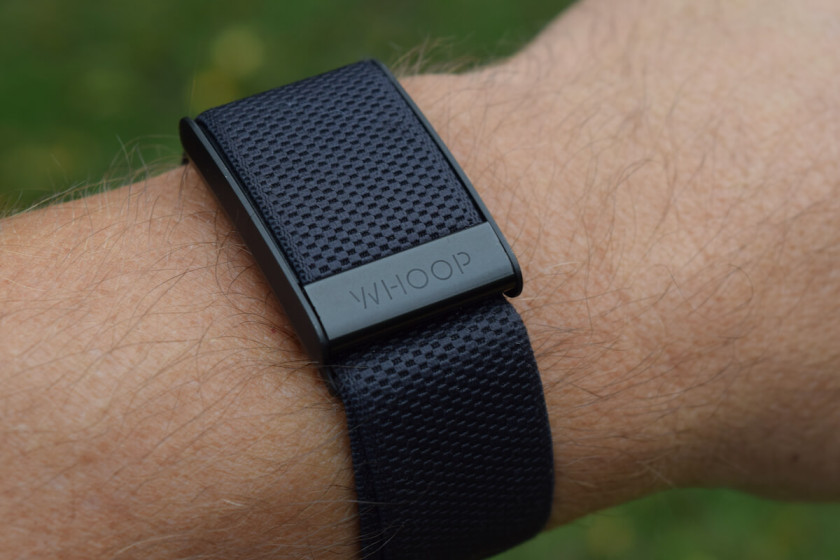
The WHOOP 4.0 is a minimalistic, subscription-based fitness tracker made with the active health enthusiasts and athletes in mind, as it focuses on recovery, sleep, and strain data, rather than the wrist-based distractions. With the introduction of WHOOP 4.0 in late 2021, the screen was removed altogether to create a more minimal, lightweight design that comes in at about 33 percent smaller in volume than its predecessor and has a comfortable elastic SuperKnit band and fully waterproof battery pack which enables on-the-go charging without needing to take off the band on your wrist. WHOOP 4.0 is equipped with the latest sensors to measure skin temperature, SpO 2, heart rate, and HRV and is able to create strain, recovery, and sleep scores each day for users via its companion app, where they can receive personalized coaching, sleep scheduling recommendations and learn actionable information that helps them make healthier choices every day.
Reviewers find it accurate in sleep and HRV monitoring and the silent haptic alarm which awakens people efficiently at optimal times without disrupting others. Disadvantages are that it does not have a screen or on-device controls, charges more slowly than the competition, and requires a subscription fee of about $30 per month or less with longer pay periods. WHOOP 4.0 is a highly data-focused and distraction-free wearable that is the perfect choice of anyone who wants to take their recovery and performance to the next level.
3. Ultrahuman Ring Air
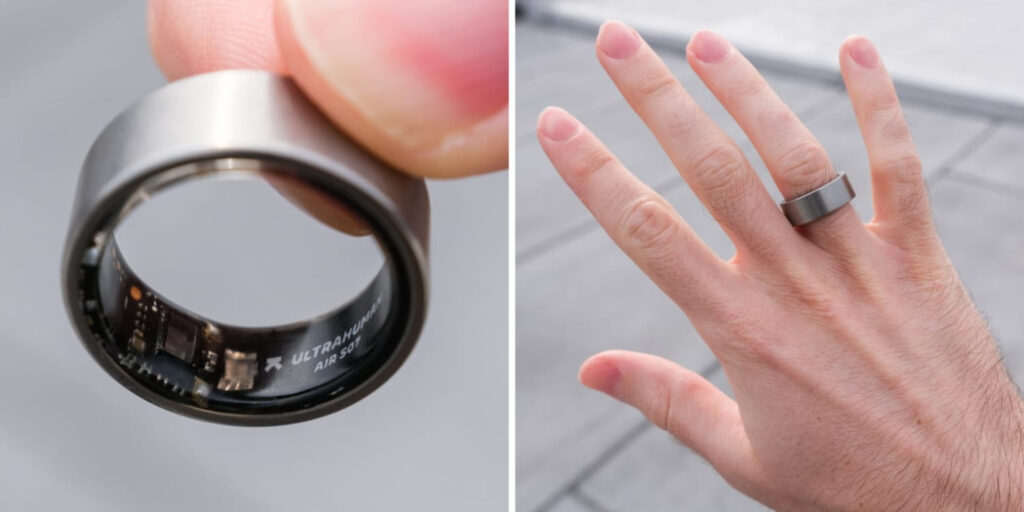
The Ultrahuman Ring Air is an innovation in wearable wellness that transforms your screen-free smart ring into a device that gives you advanced health insights without having to pay a subscription fee. The ultra lightweight Titanium construction weighs only 2.4 to 3.6 grams, with a thickness measuring less than 3mm, and is designed, thanks to a tungsten-carbide reinforcement, which is highly durable but also surprisingly comfortable to wear all day. Its interior holds high-performance biosensors, including infrared PPG to measure the heart rate and SpO2, medical-grade skin-temperature sensors, and a six-axis motion detector, that can provide constant monitoring of sleep, how you move, HRV, and recovery metrics.
More than many competitors, the Ring Air comes with metrics on health and advice through the Ultrahuman app without tethering you to a subscription. They can get personalised suggestions like optimal windows to consume caffeine, nudges on recovery, and sleep based on circadian rhythm and all this is presented in a visual and easy to understand interface. Its recovery and slumber tending are both high appraiseable in the quantity and exactness of the information-including the actionable facts like sleep indebtedness, Instrulant timings, and energy schedules across the day pocket-lint.
4. Apple Watch Extreme
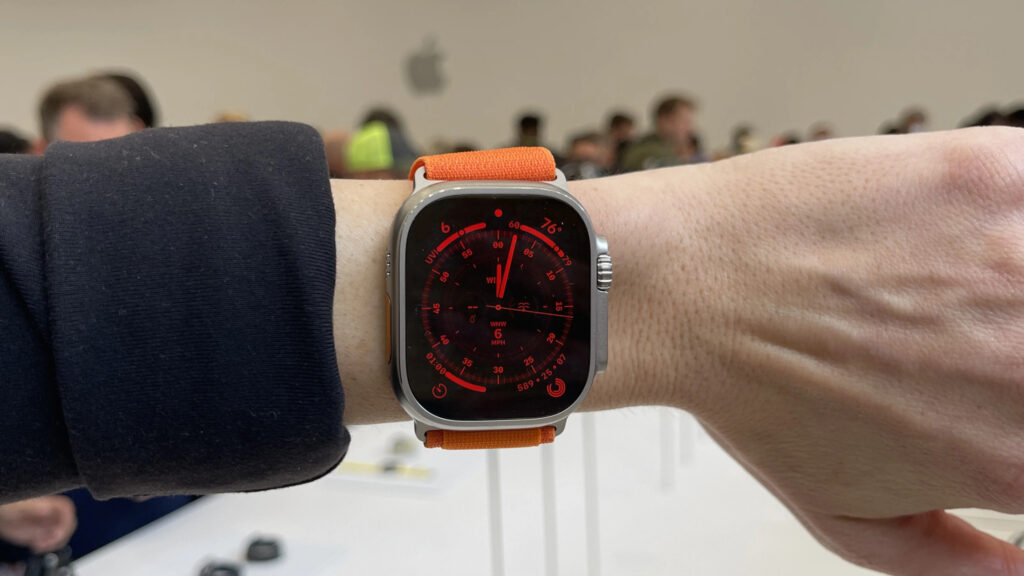
The Apple Watch Ultra is the most serious and innovative smart watch proposed by Apple which is dedicated to athletes, adventurers, people who enjoy being outside and who want to be sure that their device can take their efforts. As befits an aerospace-grade titanium cased watch with a flat sapphire crystal display, the Apple Watch Ultra is also waterproof to 100 meters. This model has a big 49mm Retina screen that is extremely bright which helps one to read in direct sunlight. The Ultra is loaded up with advanced functions such as the dual GPS frequencies to achieve maximum precision and an Action button, which can be used to program in a work-out or a way-point so that they can be quickly selected. There is of course the 86-decibel siren which can be used as an emergency signal.
Its battery life is also a major plus that can last a maximum of 36 hours on a single charge and a maximum of 60 hours in low power operating conditions when it is being used in an adventure trip that could take a number of days. The Ultra also has advanced health features such as blood oxygen measure, ECG and temperature sensing, and improved sleep tracking to make it an effective health assistant. The Apple Watch Ultra has accuracy, dependability and dexterity, it suits the daredevils, as well as marathon runners, scuba divers, and the backcountry hiker. It is not just a smartwatch it is a powerful tool built to perform to expectations by people who push the boundaries.
FAQs:
Can I upgrade Ring 3 firmware to get Ring 4 features?
No, hardware limitations prevent SpO₂ and refined temperature tracking from being enabled on Ring 3.
Does Ring 4 fit the same as Ring 3?
Yes. Ring 4 uses the same sizing kit, though its slimmer shape may offer a different fit sensation.
Is Ring 4’s SpO₂ accurate for medical use?
No. While it provides meaningful trends, it’s not a diagnostic tool.
Do I need a membership to use these rings?
Basic tracking is available without membership. Membership enables advanced insights and data reporting.
What happens when Ring 3 loses firmware support?
You’ll still get basic functionality, but new features may no longer be released. Ring 4 users can expect support until at least 2028.
Conclusion:
If you prioritize trusted performance, longer battery, and cost savings, the Oura Ring 3 remains an excellent option in 2025 especially if you’re entering wearable wellness at a lower price point. However, if your health goals include advanced tracking of blood oxygen, temperature changes, and improved readiness analysis, the Oura Ring 4 delivers meaningful improvements. With its refined design, faster charging, and extended support, Ring 4 is the forward-looking choice.
